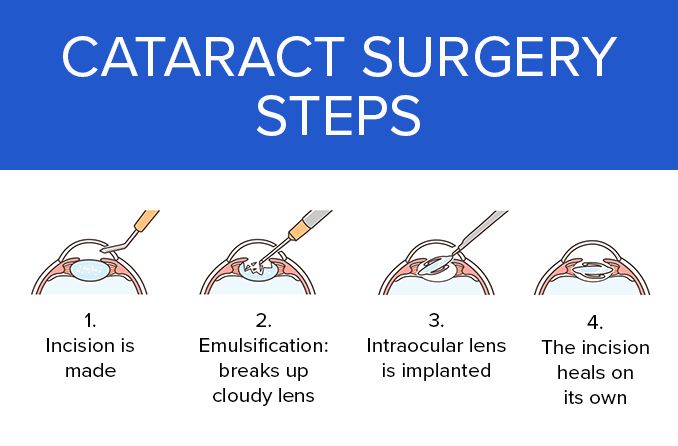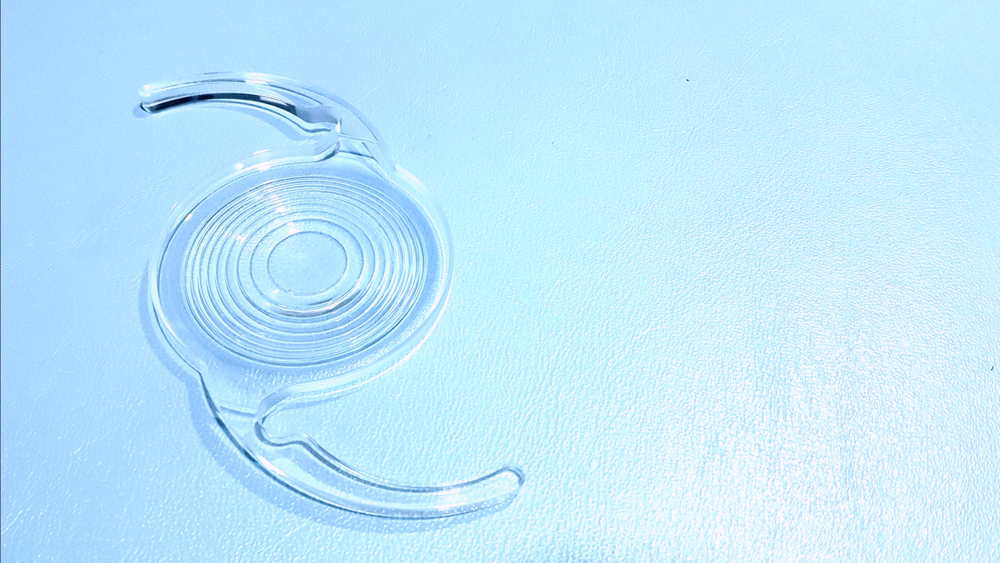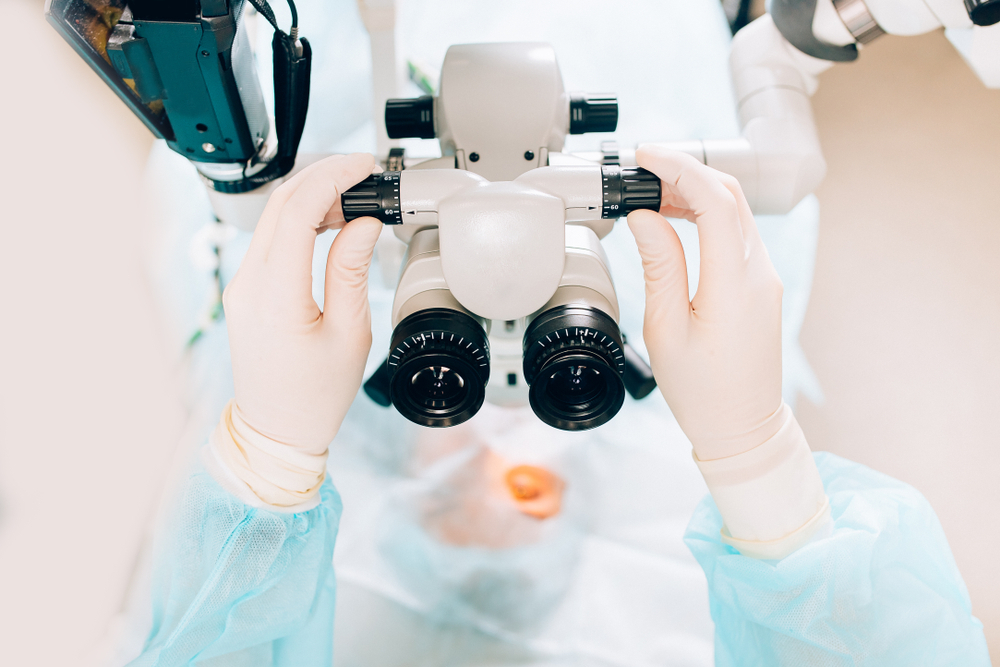
Prima Medical Center Saigon, Cataract
All About Cataract Surgery
13 January, 2024
Cataract surgery is a procedure that helps fix the vision problems caused by a cataract. During surgery, the cloudy lens inside your eye will be replaced with a clear artificial lens. It’s an outpatient procedure, which means you can usually go home the same day.

Mr. Trung Nguyen (right), Vice Chairman of Vietbank, a cataract patient @ Prima Saigon Medical Center
Surgery is the only way to treat a cataract
It might sound scary at first, but cataract removal surgery is one of the safest and most common surgeries performed today. You won’t feel any pain during the procedure, and it usually only takes 10 to 15 minutes.
You’re more likely to need treatment for cataracts as you get older. That’s when most cataracts develop or get worse.
A cataract diagnosis doesn’t always mean you need surgery right away. Many people decide to wait until their vision problems get worse, while others prefer to be more proactive with treatment.
According to the National Eye Institute, cataracts affect:
- About 1 in 20 people aged 50 to 54
- Around half of people aged 75 to 79
- More than 2 in 3 people aged 80 or older

NHI Stats about Cataract
Millions of people in Vietnam have cataracts removed every year. About 99% of Vietnamese people who have surgery will see more clearly after their procedure.
How is cataract surgery done?
Cataract treatment involves removing your cloudy natural lens and replacing it with a clear artificial one.
The new lens is called an intraocular lens, or IOL. The IOL helps restore the clear vision you had before your cataract developed.

A Cataract Surgery
A medical eye surgeon called an ophthalmologist will perform your cataract surgery procedure.
During the average surgery, the ophthalmologist @ Prima Saigon will:
- Place numbing eye drops in your eye so you don’t feel pain. They may also give you medicine to help you relax.
- Make painless, small incisions along the sides of your cornea (the clear part of your eye).
- Use an ultrasound or laser to carefully break up the cloudy lens into small pieces.
- Gently remove the lens pieces from the eye.
- Place an artificial lens in the spot where your natural lens used to be.
- Close any incisions.
Most incisions heal on their own without stitches. A protective shield or patch will be placed over your eye to keep it safe until your follow-up exam (usually the next day).
If you need cataract treatment in both eyes, your surgeon will probably wait one or two weeks between procedures. That gives your first eye a chance to heal. But in some circumstances, both eyes can be treated on the same day.
Types of cataract surgery
Eye doctors can use different types of cataract surgery to help their patients see better.
Phacoemulsification
The most common cataract treatment in Vietnam is called phacoemulsification, or “phaco” for short.
Phacoemulsification involves ultrasound waves to break up the cloudy lens and remove it.
Laser cataract surgery
Laser cataract surgery uses newer technology. During the procedure, the doctor uses a femtosecond laser to make incisions, soften the hardened cataract, then break up the cataract into small pieces.
Laser surgery is usually more expensive and may not be covered by insurance. This is because there is not strong evidence that the results are better than when ultrasound is used to remove the cataract. Your ophthalmologist can help you decide which type of surgery is best for you.
Different types of artificial lenses
Eye doctors can implant different types of IOLs during cataract surgery:
- Monofocal IOLs – These are the standard lenses used for most surgeries. They’re used to provide distance vision. You may still need to use eyeglasses or reading glasses after surgery.
- Multifocal IOLs – These are like trifocal and bifocal lenses that can provide both near vision and distance vision. They can be helpful for patients with age-related farsightedness (presbyopia).
- Accommodative IOLs – These lenses can allow near, intermediate and distance vision.
- Toric IOLs – These lenses are designed to correct astigmatism.
- Extended depth-of-focus (EDOF) IOLs – These are used to provide intermediate and distance vision.
- Light-adjustable IOLs – This is a newer type of lens that can be adjusted after surgery. Light-adjustable lenses (LAL) can help people with refractive errors see better without glasses.
Some IOLs combine two or more types. For example, you may be able to choose a toric lens for astigmatism that’s also designed to help your presbyopia.

Multifocal Lens
Different IOLs have different prices, and some of them aren’t covered by insurance. Your eye doctor will discuss these options and costs with you.
Preparing for cataract surgery
Before you schedule your procedure, your doctor will perform a comprehensive eye exam to check the health of your eyes. They’ll look for any problems that could affect your surgery.
They’ll also ask about any medications or supplements you’re taking. It’s possible that you might need to stop taking some of them for a while.
The doctor will determine your nearsightedness, farsightedness or astigmatism measurements. These will help them decide which artificial lenses to recommend.
Your doctor will also tell you what to expect before, during and after your cataract procedure.
If you have any questions about your cataract surgery procedure, be sure to discuss them before you sign the documents that authorize surgery.

Mr Tri Tran, the owner of renowned Grand Castella Bakery, a cataract patient @ Prima Saigon
Cataract surgery recovery
Cataract surgery only takes 10 to 15 minutes, but you could be at the facility for a few hours. The extra time is used for preparation, post-surgery evaluation and recovery instructions.
You’ll need to have someone drive you home after your procedure. You’ll also need to wear your eye shield any time you sleep for the first several days. Some people need to wear it for longer.
Cataract treatment can make your eyes more sensitive to light while they recover. It’s important to wear dark sunglasses outside after surgery. Some facilities will give you special glasses to take home.
Your doctor may prescribe medicated eye drops to help your eye heal.
Side effects
You might experience a little discomfort while your eye heals. Any side effects should go away on their own in the days or weeks after your procedure.
Some possible side effects can include:
- Blurry vision
- Eye redness
- Watery eyes
- Sensitivity to light
Call your eye doctor right away if:
- You’re in a lot of pain.
- Your eye looks very bloodshot.
- There’s discharge on or around your eye.
You see new eye floaters or flashes of light.
Risks
Cataract removal is one of the safest and most effective surgeries used today. But no surgery is risk-free.
Possible complications include:
- Pain
- Swelling on the outside or inside of the eye
- Visual effects like glare or halos around lights
- Artificial lens dislocation
- Retinal detachment
- Infection
- Bleeding
- Vision loss
Some health conditions can put you at a higher risk for complications. Make sure your doctor knows your entire medical history before you schedule surgery.
Secondary cataracts
The most frequent aftereffect of cataract surgery is posterior capsular opacification (PCO).
Many people call PCO a “secondary cataract” because it makes your eyesight blurry again. But it isn’t a real cataract. It’s clouding on the thin capsule that holds your lens in place.

Cataract Surgery @ Prima Saigon
The treatment is simple and takes about five minutes. The doctor uses a special laser to make an opening in the capsule so that light can pass through. They won’t need to make any incisions.
What to avoid after surgery
You may need to avoid certain activities for a few weeks after your procedure. They might include:
- Doing strenuous activity and exercise
- Bending over
- Lifting heavy objects
- Wearing makeup on or around your eye
- Exposing your eye to water
Rubbing your eye
Your doctor may give you specific instructions to follow during your recovery. Follow them very carefully so your eye can heal properly.

Dr An Trinh, Head of Cataract Surgery @ Prima Saigon, is consulting a cataract patient
If you have a question during your recovery, contact your eye doctor’s office so a doctor or assistant can give you the most accurate answer.
Cataract surgery is a procedure that helps fix the vision problems caused by a cataract. During surgery, the cloudy lens inside your eye will be replaced with a clear artificial lens. It’s an outpatient procedure, which means you can usually go home the same day.

Mr. Trung Nguyen (right), Vice Chairman of Vietbank, a cataract patient @ Prima Saigon Medical Center
Surgery is the only way to treat a cataract
It might sound scary at first, but cataract removal surgery is one of the safest and most common surgeries performed today. You won’t feel any pain during the procedure, and it usually only takes 10 to 15 minutes.
You’re more likely to need treatment for cataracts as you get older. That’s when most cataracts develop or get worse.
A cataract diagnosis doesn’t always mean you need surgery right away. Many people decide to wait until their vision problems get worse, while others prefer to be more proactive with treatment.
According to the National Eye Institute, cataracts affect:
- About 1 in 20 people aged 50 to 54
- Around half of people aged 75 to 79
- More than 2 in 3 people aged 80 or older

NHI Stats about Cataract
Millions of people in Vietnam have cataracts removed every year. About 99% of Vietnamese people who have surgery will see more clearly after their procedure.
How is cataract surgery done?
Cataract treatment involves removing your cloudy natural lens and replacing it with a clear artificial one.
The new lens is called an intraocular lens, or IOL. The IOL helps restore the clear vision you had before your cataract developed.

A Cataract Surgery
A medical eye surgeon called an ophthalmologist will perform your cataract surgery procedure.
During the average surgery, the ophthalmologist @ Prima Saigon will:
- Place numbing eye drops in your eye so you don’t feel pain. They may also give you medicine to help you relax.
- Make painless, small incisions along the sides of your cornea (the clear part of your eye).
- Use an ultrasound or laser to carefully break up the cloudy lens into small pieces.
- Gently remove the lens pieces from the eye.
- Place an artificial lens in the spot where your natural lens used to be.
- Close any incisions.
Most incisions heal on their own without stitches. A protective shield or patch will be placed over your eye to keep it safe until your follow-up exam (usually the next day).
If you need cataract treatment in both eyes, your surgeon will probably wait one or two weeks between procedures. That gives your first eye a chance to heal. But in some circumstances, both eyes can be treated on the same day.
Types of cataract surgery
Eye doctors can use different types of cataract surgery to help their patients see better.
Phacoemulsification
The most common cataract treatment in Vietnam is called phacoemulsification, or “phaco” for short.
Phacoemulsification involves ultrasound waves to break up the cloudy lens and remove it.
Laser cataract surgery
Laser cataract surgery uses newer technology. During the procedure, the doctor uses a femtosecond laser to make incisions, soften the hardened cataract, then break up the cataract into small pieces.
Laser surgery is usually more expensive and may not be covered by insurance. This is because there is not strong evidence that the results are better than when ultrasound is used to remove the cataract. Your ophthalmologist can help you decide which type of surgery is best for you.
Different types of artificial lenses
Eye doctors can implant different types of IOLs during cataract surgery:
- Monofocal IOLs – These are the standard lenses used for most surgeries. They’re used to provide distance vision. You may still need to use eyeglasses or reading glasses after surgery.
- Multifocal IOLs – These are like trifocal and bifocal lenses that can provide both near vision and distance vision. They can be helpful for patients with age-related farsightedness (presbyopia).
- Accommodative IOLs – These lenses can allow near, intermediate and distance vision.
- Toric IOLs – These lenses are designed to correct astigmatism.
- Extended depth-of-focus (EDOF) IOLs – These are used to provide intermediate and distance vision.
- Light-adjustable IOLs – This is a newer type of lens that can be adjusted after surgery. Light-adjustable lenses (LAL) can help people with refractive errors see better without glasses.
Some IOLs combine two or more types. For example, you may be able to choose a toric lens for astigmatism that’s also designed to help your presbyopia.

Multifocal Lens
Different IOLs have different prices, and some of them aren’t covered by insurance. Your eye doctor will discuss these options and costs with you.
Preparing for cataract surgery
Before you schedule your procedure, your doctor will perform a comprehensive eye exam to check the health of your eyes. They’ll look for any problems that could affect your surgery.
They’ll also ask about any medications or supplements you’re taking. It’s possible that you might need to stop taking some of them for a while.
The doctor will determine your nearsightedness, farsightedness or astigmatism measurements. These will help them decide which artificial lenses to recommend.
Your doctor will also tell you what to expect before, during and after your cataract procedure.
If you have any questions about your cataract surgery procedure, be sure to discuss them before you sign the documents that authorize surgery.

Mr Tri Tran, the owner of renowned Grand Castella Bakery, a cataract patient @ Prima Saigon
Cataract surgery recovery
Cataract surgery only takes 10 to 15 minutes, but you could be at the facility for a few hours. The extra time is used for preparation, post-surgery evaluation and recovery instructions.
You’ll need to have someone drive you home after your procedure. You’ll also need to wear your eye shield any time you sleep for the first several days. Some people need to wear it for longer.
Cataract treatment can make your eyes more sensitive to light while they recover. It’s important to wear dark sunglasses outside after surgery. Some facilities will give you special glasses to take home.
Your doctor may prescribe medicated eye drops to help your eye heal.
Side effects
You might experience a little discomfort while your eye heals. Any side effects should go away on their own in the days or weeks after your procedure.
Some possible side effects can include:
- Blurry vision
- Eye redness
- Watery eyes
- Sensitivity to light
Call your eye doctor right away if:
- You’re in a lot of pain.
- Your eye looks very bloodshot.
- There’s discharge on or around your eye.
You see new eye floaters or flashes of light.
Risks
Cataract removal is one of the safest and most effective surgeries used today. But no surgery is risk-free.
Possible complications include:
- Pain
- Swelling on the outside or inside of the eye
- Visual effects like glare or halos around lights
- Artificial lens dislocation
- Retinal detachment
- Infection
- Bleeding
- Vision loss
Some health conditions can put you at a higher risk for complications. Make sure your doctor knows your entire medical history before you schedule surgery.
Secondary cataracts
The most frequent aftereffect of cataract surgery is posterior capsular opacification (PCO).
Many people call PCO a “secondary cataract” because it makes your eyesight blurry again. But it isn’t a real cataract. It’s clouding on the thin capsule that holds your lens in place.

Cataract Surgery @ Prima Saigon
The treatment is simple and takes about five minutes. The doctor uses a special laser to make an opening in the capsule so that light can pass through. They won’t need to make any incisions.
What to avoid after surgery
You may need to avoid certain activities for a few weeks after your procedure. They might include:
- Doing strenuous activity and exercise
- Bending over
- Lifting heavy objects
- Wearing makeup on or around your eye
- Exposing your eye to water
Rubbing your eye
Your doctor may give you specific instructions to follow during your recovery. Follow them very carefully so your eye can heal properly.

Dr An Trinh, Head of Cataract Surgery @ Prima Saigon, is consulting a cataract patient
If you have a question during your recovery, contact your eye doctor’s office so a doctor or assistant can give you the most accurate answer.



